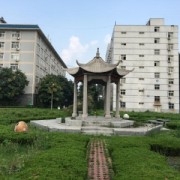初一英语上册辅导,初一英语上册的语法
来源:江南官网app下载 时间:2023-07-24

初一英语上册的语法,词法等整理如下,孩子们可以参考以下知识点逐一搞懂,那么初一上册的英语语法就会很容易学好了,从而为以后的英语学习打下了牢固的基础。
一、名词所有格 名词如要表示与后面名词的所有关系,通常用名词所有格的形式,意为"……的"。一般有以下几种形式:
a. 如果复数名词以s结尾,只加"'"。例如: Teachers' Day 教师节 The boys' game 男孩们的游戏。
b.动物和无生命事物的名词的所有格一般不在词尾加"'s",而常常用介词of的短语来表示。 a map of China 一幅中国地图 the name of her cat 她的猫的名字 a picture of my family 我的家庭的一张照片 the door of the bedroom 卧室的门。
c.一般情况下在词尾加"'s"。例如: Kate's father Kate的爸爸 my mother's friend 我妈妈的朋友。
d.如果复数名词不以s结尾,仍加"'s"。例如: Children's Day 儿童节 Women's Day 妇女节。
e.表示两个或几个共有时,所有格应加在后一个名词上。例如: Lucy and Lily's room Lucy 和Lily的房间 Kate and Jim's father Kate 和Jim的爸爸。
二、There be 的句子结构 There be是一个"存在"句型,表示"有"的意思,肯定句的形式为:There be + 名词(单数或复数)+地点状语或时间状语。
a. be动词单复数的确定,看be后边第一个名词,当所接主语为
单数或不可数名词时,be动词形式为is;当所接主语为复数名词时,be动词为are;当be动词后接两个以上主语时,be动词与最临近主语保持数上的一致。意思为"某地有某人或某物"。如: There is an eraser and two pens on the desk. 桌子上有一块橡皮和两支钢笔。 There are two pens and an eraser on the desk. 桌上有两支钢笔和一块橡皮。
b. there be的否定句,即在be的后面加上not。 否定形式为:There be + not + (any) + 名词+地点状语。 There is not any cat in the room. 房间里没猫。 There aren't any books on the desk. 桌子上没书。
c. there be句型的疑问句就是将be提到句首:Be there + (any) +名词+地点状语?肯定回答:Yes, there is / are. 否定回答:No, there isn't / aren't. ---Is there a dog in the picture? 画上有一只狗吗? ---Yes, there is. 有。 ---Are there any boats in the river? 河里有船吗? ---No, there aren't. 没有。
e. 特殊疑问句:How many . . . are there (+地点状语)?"某地有多少人或物?"回答用There be . . . There's one. / There are two / three / some . . . 有时直接就用数字来回答。One. / Two . . . ---How many students are there in the classroom? 教室里有多少学生? ---There's only one. / There are nine. 只有一个。/有九个。
f. 如果名词是不可数名词,用:How much + 不可数名词 + is there + 地点状语? How much water is there in the cup? 杯中有多少水? How much food is there in the bowl? 碗里有多少食物? 一.动词be(is,am,are)的用法我(I)用am, 你(you)用are,is跟着他(he),她(she),它(it)。单数名词用is,复数名词全用are。变否定,更容易,be后not加上去。变疑问,往前提,句末问号莫丢弃。还有一条须注意,句首大写莫忘记。
三、these和those用法
this, that, these和those是指示代词,these是this的复数形式,指时间,距离较近的或下面要提到的人或事;those是that的复数形式,指时间、距离较远或前面已经提到过的人或事物。
1.This is my bed. That is Lily’s bed. 这是我的床。那是莉莉的床。
2.These pictures are good. 那些画很好。
3. Are those apple trees? 那些是苹果树吗?
在回答主语是these或those的疑问句时,通常用they代替these或those以避免重复。如:
4.Are these/those your apples? 这些(那些)是你的苹果吗?
Yes, they are. 是的,他们是。
四、句子单数变复数,注意以下五要素
1.主格人称代词要变成相应的复数主格人称代词,即I→we, you→you,she,he,it→ they。如: She is a girl. →They are girls.
2.am,is要变为are。如:
I’m a student. →We are students.
3.不定冠词a,an要去掉。如: He is a boy. →They are boys.
4.普通单数名词要变为复数形式。如: It is an apple. →They are apples.
5.指示代词this,that要变为these,those。如: This is a box. →These are boxes.
五、名词复数:
在英语里面,名词分可数名词(countable noun)和不可数名词(uncountable noun),不可数名词没有单复数之分,用时只当单数词用;可数名词有单复数之分,一个的前面要用a或an,eg: a pencil, a basketball, a dictionary, an egg, an ID card,而复数即两个或两个以上的要作相应的变化,情况如下:
1.特殊词,特殊变化,需单独记:
child→children,man→men,foot→feet,woman→women
tooth→teeth,sheep→sheep,deer→deer
2.一般的词在单数词后直接+“s”:
book→books,pen→pens,car→cars,map→maps,cartoon→cartoons
3.以s,x,sh,ch结尾的词+“es” box→boxes,watch→watches
4.以辅音字母+y结尾的名词去掉“y”,改成“i”,再加“es” family→families,comedy→comedies
5.以f或fe结尾的词,先去掉f或fe,改成“v”再加es knife→knives,wife→wives,handkerchief→handkerchieves
六、一般现在时
一般现在时表示经常性、习惯性的动作,或表示现在的特征、状态。
1.当主语是非第三人称单数时,行为动词的一般现在时变化形式(见下表)。如:
句式:主语+行为动词原形+其它 例子:We speak Chinese.
否定句:主语+don’t+行为动词原形+其他 例子:We don’t speak Chinese.
一般疑问句Do+主语+行为动词原形+其他? 例子: Do you speak Chinese?
肯定回答:Yes,主语+do 例子:Yes, we do. 否定回答:No,主语+don’t 例子:No, we don’t.
2.当主语是第三人称单数时,行为动词一般现在时的句型变化如下:
a.肯定句在行为动词原形后+s/es(其构成方法与名词单数变复数相同)。
b.否定句用助动词doesn’t+动词原形。
c.一般疑问句则是把助动词does放在句首,后面动词用原形,回答时,肯定用“Yes, 主语+does.”;否定用“No,主语+doesn’t.”。
肯定句:主语+行为动词s/es+其他 例子:She speaks Chinese.
否定句:主语+doesn’t+行为动词原形+其他 例子:She doesn’t speak Chinese.
一般疑问句:Does+主语+行为动词原形+其他? 例子:Does she speak Chinese?
肯定回答:Yes,主语+does
否定回答:No, she doesn’t.
七. 介词:in, on, under, behind, near, at, of
1.. in表示"在……中", "在……内"。例如: in our class 在我们班上 in my bag 在我的书包里 in the desk 在桌子里 in the classroom 在教室里
2. on blackboard 在黑板上
3.. under表示"在……下"。例如: under the tree 在树下 under the chair 在椅子下 under the bed 在床上
4. behind表示"在……后面"。例如: behind the door 在门后 behind the tree 在树后
5. near表示"在……附近"。例如: near the teacher's desk 在讲桌附近 near the bed 在床附近
6. at表示"在……处"。例如: at school 在学校 at home 在家 at the door 在门口
7. of 表示"……的"。例如: a picture of our classroom 我们教室的一幅画 a map of China 一张中国地图
八.冠词 a / an / the: 冠词一般位于所限定的名词前,用来署名名词所指的人或事物。冠词有不定冠词和定冠词两种。
1.不定冠词有两个形式,即a和an。
a用在以辅音音素开头的词前,如a book; an用在以元音音素开头的字母前,如an apple. a或an与可数名词单数连用,泛指某类人或某物中的一个。 This is a cat. 这是一只猫。 It's an English book. 这是一本英语书。 His father is a worker. 他的爸爸是个工人。
2.定冠词the
the可以用在可数名词前,也可以用在不可数名词前,表示某个或某些特定的人或事物,也可以指上文提到过的人或事物。 Who's the boy in the hat? 戴帽子的男孩是谁呀? ------ What can you see in the classroom? ------ I can see a bag. ------ Where's the bag? ------ It's on the desk. ------- 你能在教室里看到什么呀? ------ 我能看见一个书包。 ------ 书包在哪呀? ------ 在桌子上。
九、this,that和it用法
1.his和that是指示代词,it是人称代词。
2.距离说话人近的人或物用this, 距离说话人远的人或物用that。如:
This is a flower. 这是一朵花。(近处) That is a tree. 那是一棵树。(远处)
3.放在一起的两样东西,先说this, 后说that。如:
This is a pen. That is a pencil. 这是一支钢笔。那是一支铅笔。
4.向别人介绍某人时说This is…, 不说That is…。如: This is Helen. Helen, this is Tom. 这是海伦,海伦,这是汤姆。
5.This is 不能缩写, 而That is可以缩写。如:
This is a bike. That’s a car. 这是一辆自行车。那是一辆轿车。
6.打*时,介绍自己用this, 询问对方用that。如: —Hello! Is that Miss Green? 喂,是格林小姐吗? —Yes, this is. Who’s that? 是的,我是,你是谁? 注意:虽然汉语中使用“我”和“你”,但英语中打*时绝不可以说:I am…, Are you…?/Who are you?
7.在回答this或that作主语的疑问句时, 要用it代替this或that。如:
a—Is this a notebook? 这是笔记本吗? —Yes, it is. 是的,它是。
b—What’s that? 那是什么?
—It’s a kite. 是只风筝。
十、名词所有格
1.单数名词后直接加 “ ’s ”
Jim’s coat 吉姆的外套 Jeff’s mother杰夫的妈妈
2.以s结尾的复数名词,只加“’
Teachers’ Day教师节 the twins’ books双胞胎的书
3.不以s结尾的不规则的名词复数,加“ ’s ” Children’s Day 儿童节 men’s shoes男式鞋 4.表示两者共同拥有时,只在最后一个名词后加’s
5.表示两者各自拥有时,要在每个名词后加’s
Lucy and Lily’s mother 露茜和莉莉的妈妈(共同的妈妈,一个妈妈)
Lucy’s and Kate’s rooms 露茜和凯特的房间(各自的房间,两间房子)
十一、动词
A 第三人称单数
当动词是第三人称单数时,动词应该像名词的单数变动词那样加s,如下:
sees,
1.一般在词后加dances, trains s
。如:comes, spells, waits, talks, s, wishes,
2.在x, finishes sh, ch,
s, tch后加es。如:watches, washedy-studies,
3.以辅音字母加hurry-
y结尾的变y为i再加es。如:stuhurries, try-tries
ays, 2enjoys, )以元音字母加buys
y结尾的直接加s。如:plays, says, st
4.以o结尾加es。如:does, goes
特殊的有:are-is, have-has 现在分词
用原形,构成如下: 当我们说某人正在做什么事时,
动词要使用分词形式,不能 see-seeing,
1.一般在后加tra
ing。如:spell-spelling, sing-singing,watching, in-training, go-going,
play-playing, hurry-hurrying, watch- do-doing
ncing,
2.以不发音wake-waking, e的结尾的去掉e再加ing。如:dance-da
ave-having
意除开字母组合如
3.以重读闭音节结尾且一个元音字母+一个辅音字母
(注字母再加show ing–。如:showing, put-p
draw-drawing)要双写最后的辅音n-beginning utting, run-running,
get-getting, let-letting, begi 四)以ie结尾的变ie为y再加ing。如:tie-tying系 die-dying死 lie-lying 位于.
十二、英语日期的表示法
英语中月份和星期名称都是专有名词,它们的首字母必须大写,并且前面无需用冠词。
用英语表示日期,其顺序为月+日+年,日和年之间需用逗号隔开。
如:August 2nd,2003(2003年8月2日)。
也可以用日+月+年来表示。如:10th May,2003(2003年5月10日)英语日期前介词的使用:若指在哪一年或哪一月,则用介词in,若具体到某一天,则需用介词on。 1.She was born in 1989
2.She was born in August.
3.She was born in August 1989.
4.She was born on 2nd August, 1989.
十三、关于时间的问法
1.以when提问,“什么时候”可以是较长的时间段,也可以是较短的时间点
①When is your birthday? 你的生日是什么时候?
②My birthday is Dec. 29th. 我的生日是12月29日。
这里就是指一天的时间段
1.When do you go home? 你几点回家?
.I go home at 4:30 p.m. 我下午4:30回家. 这里when问的是具体的时间。
2.具体几点我们通常用what time提问
①What time is it now? 现在几点了? or What’s the time? 几点了?
It’s 9:26. 现在九点二十六。
②What time is it by your watch? 你手表几点了? It’s 8:36. Oh, It’s 50 minutes late 8:36,哦,它慢了50分钟。
③What time do you get up? 你几点起床? I get up at 6:00 a.m. 我早上6点起床。
十四、代词
代词是代替名词的一种词类。大多数代词具有名词和形容词的功能。代词在英语中的使用是很频繁的,这是因为在英语语言习惯中,第二次提到一些名词时,一般用代词代替这些名词。英语中的代词,按其意义,特征以及在句子中的作用可分为人称代词、物主代词、指示代词、反身代词、关系代词和不定代词。 1)不定代词 、One的用法
一般是指人或物,在句中可做主语、宾语和定语。
One should try one’s best to serve the people. (指人) 一个人应该尽最在努力为人民服务。
A:-----Look at that boy!看那个男孩!B: Which one? 哪一个?
A:-----The one wearing a blue sweater. 穿蓝色毛衣的那个。
Which boxes are bigger , these ones or those ones?哪些盒子更大一些,这些还是那些?(指物) ② some和any
1、在肯定句中用some.例如: There are some books on the desk.桌子上有一些书。 Lucy has some good books露
人称代词指代人或物,在句中作主语或宾语,所以有主格和宾格。
宾格代词用于替代处于宾语位置上的名词,可以用作直接宾语和间接宾语。
例如:I am a student. (I 主语)
Please help me. (me 直接宾语) Give me a book. (me 间接宾语)
物主代词是表示所有关系的一种代词,亦称所有格代词。物主代词有两种形式:形容词性物主代词和名词性物主代词。
形容词性物主代词为限定词,放在名词或名词短语前作定语。
如:This is my book.
名词性物主代词起名词的作用,后面不可以再接名词。在
句子中可以作主语、宾语或表语。 如:1. Your pen is red. Mine is black.
你的钢笔是红色的,我的是黑色的。 2. He didn’t use his ink. He used mine.
他没有用他自己的墨水,他用了我的。 3. That book is hers, not yours.
那本书是她的,不是你的。
十七、时间的表达法
(1) 直读式,即直接读出时间数字 7: 05 seven five 8:16 eight sixteen
(2) 过、差式,即几点差几分,几点过几分。(以30分为分界线) 1:25 twenty-five past one 2:30 half past two 3:43 seventeen to four 4:38 twenty-two to five
(3)12小时制
6:00 a.m. 上午6点 8:20 p.m. 下午8点20分 (4)24小时制
13:00 13点钟 22:15 22点15分 (5)15分可用quarter
4:15 a quarter past four 5:45 a quarter to six (6)时间前通常用at.
at 5 o’clock at 7:30 p.m.
14、动词be(is,am,are)的用法
我(I)用am, 你(you)用are,is跟着他(he),她(she),它(it)。单数名词用is,复数名词全用are。变否定,更容易,be后not加上去。变疑问,往前提,句末问号莫丢弃。还有一条须注意,句首大写莫忘记。
十八、句式
1.陈述句
肯定陈述句
a. This is a book. (be动词)
b .He looks very young. (连系动词)
c.I want a sweat like this. (实义动词)
d.I can bring some things to school. (情态动词) 构 )
e.There’s a computer on my desk. (There be结否定陈述句
1.祈使句主要用来表示说话人的请求、命令、建议、叮嘱等意图。祈使句一般不用主语,读时用降调。为使语气委婉、礼貌,常在句首或句尾加please 。在句尾时,please前多用逗号。
2.祈使句肯定形式的谓语动词一律用动词原形。 Go and see. 去看看。 Come in, please. 请进。
3.祈使句的否定形式常用don't于句首。 Don't look at your books. 不要看书。 Don't play on the road. 不要在马路上玩
4. 疑问句
一般疑问句
a.Is Jim a student?
b. Can I help you?
c.Does she like salad?
d.Do they watch TV?
e. Is she reading?
肯定回答:
a. Yes, he is.
b. Yes, you can.
c.Yes, she does.
d. Yes, they do.
e.Yes, she is.
否定回答:
a.No, he isn’t.
b. No, you can’t
c.No, she doesn’t.
d. No, she isn’t.
2.选择疑问句 Is the table big or *all? 回答 It’s big./ It’s *all. 3) 特殊疑问句
a. 问年龄 How old is Lucy? She is twelve.
b. 问种类 What kind of movies do you like? I like action movies and comedies.
c. 问身体状况 How is your uncle? He is well/fine.
d. 问方式 How do/can you spell it? L-double O-K.
How do we contact you? My e-mail address is ***.
e. 问原因 Why do you want to join the club?
f. 问时间 What’s the time? (=What time is it?) It’s a quarter to ten a.m..
What time do you usually get up, Rick? At five o’clock.
When do you want to go? Let’s go at 7:00.
g. 问地方 Where’s my backpack? It’s under the table.
h.问颜色 What color are they? They are light blue.
What’s your favourite color? It’s black.
j. 问人物 Who’s that? It’s my sister. Who is the boy in blue? My brother. Who isn’t at school? Peter and Emma.
还有几个句型非常重要:
a. 问价格 How much are these pants? They’re 15 dollars.
b.问*号码 What’s your phone number? It’s 576-8349.
c.问谓语(动作) What’s he doing? He’s watching TV.
e. 问职业(身份) What do you do? I’m a teacher. What’s your father? He’s a doctor.
专注教育专注中小学*补课,全国领先的*补习平台,诚聘全国各地重点学校名师,孩子成绩不理想,随时欢迎咨询。
以上就是江南官网app下载 为大家带来的初一英语上册辅导,初一英语上册的语法,希望能帮助到广大考生!







